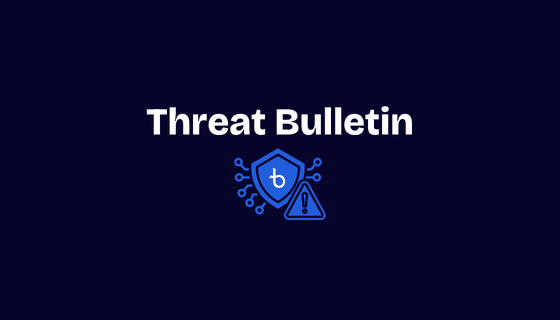
Key Alert:
A maximum-severity authentication bypass vulnerability (CVE-2024-11639) targeting Ivanti’s Cloud Services Appliance (CSA) has emerged. This flaw allows unauthorized threat actors to gain privileged access to managed devices and critical backend systems if exploited. Healthcare organizations leveraging Ivanti CSA for secure remote access must treat this as an urgent priority, as attackers can potentially traverse networks undetected, siphon off sensitive patient data, and disrupt critical healthcare operations.
Threat Overview:
The vulnerability resides in Ivanti’s Cloud Services Appliance, which provides secure remote connectivity for Ivanti Endpoint Manager Mobile (EPMM) and other Ivanti solutions. Exploiting CVE-2024-11639 enables adversaries to bypass authentication controls, effectively opening a gateway to full administrative access and unregulated data exfiltration. In some cases, attackers may chain this exploit with other vulnerabilities (e.g., CVE-2024-11772 and CVE-2024-11773) to solidify their foothold, deepen persistence, and increase the scope of their attack.
Key aspects to include:
- Attack Vector: Exploits involve sending specially crafted HTTP requests to vulnerable CSA endpoints.
- Targeted Systems: Ivanti Cloud Services Appliance installations, particularly in healthcare and other critical infrastructure sectors that rely on remote management and secure connectivity.
- Notable Characteristics: This vulnerability’s high severity and relative ease of exploitation make it a prime target for advanced persistent threat (APT) groups and opportunistic cybercriminals. The attack can occur without direct user interaction, enabling a swift and stealthy compromise.
Healthcare Impacts:
The exploitation of CVE-2024-11639 presents a clear and immediate danger to healthcare organizations who use these products, potentially disrupting critical services and compromising sensitive data. Key impacts include:
- Loss of Access to Patient Data: Attackers gaining administrative control over Ivanti CSA could lock healthcare providers out of Electronic Health Records (EHR) systems, delaying diagnosis, treatment, and patient discharge workflows. This can have life-threatening consequences for patients in critical care or undergoing time-sensitive procedures.
- Sabotage of Telemedicine and Remote Care Services: With the increasing reliance on remote connectivity for telemedicine platforms, an exploited CSA could allow attackers to hijack or disrupt virtual patient consultations, impacting continuity of care and risking misdiagnoses due to interrupted communications.
- Targeted Exfiltration of PHI for Financial Gain: Unauthorized access to PHI repositories can lead to targeted fraud, ransomware attacks, or identity theft, exposing patients and organizations to significant financial and legal repercussions under HIPAA and state privacy laws.
- Manipulation of Operational Data and Downtime: Exploited CSA infrastructure could allow attackers to corrupt scheduling, billing, or inventory systems, delaying critical supply orders (e.g., medications, blood products) or causing operational chaos that affects frontline medical teams.
- Ransomware Deployment: By gaining privileged access, attackers could deploy ransomware that paralyzes clinical and administrative systems, forcing organizations into costly negotiations while patient care suffers.
Exploitation Method:
By carefully crafting malicious HTTP requests, adversaries can trick the CSA into bypassing authentication routines. This grants attackers full administrative privileges, enabling rapid lateral movement, stealthy data collection, and eventual deployment of additional malware or ransomware within the targeted environment.
Affected Products and Versions:
- Ivanti Cloud Services Appliance (CSA): All versions before the patched releases issued by Ivanti are considered vulnerable. For the exact versions and remediation guidance, refer to Ivanti’s official advisories.
Indicators of Compromise (IoCs):
- Unusual Authentication Attempts: Sudden or unexplained administrative logins, especially those bypassing multi-factor authentication (MFA).
- Malicious Network Traffic: Suspicious inbound traffic from unrecognized IP addresses repeatedly probing or connecting to the CSA’s public-facing interfaces.
- Unauthorized Configuration Changes: Unexpected modifications to CSA settings or suspicious new accounts with elevated privileges.
(No specific public IOCs, such as known payload hashes, have been disclosed at this time. Security teams should closely monitor emerging threat intelligence feeds.)
Tactics, Techniques, and Procedures (TTPs):
| Tactics | Techniques |
|---|---|
| Initial Access | Exploitation of Public-Facing Application (T1190) |
| Privilege Escalation | Valid Accounts (T1078) |
| Defense Evasion | Exploit Application Whitelisting Bypasses (T1211) |
| Persistence | Web Shell on Server (T1505) |
| Collection | Automated Collection (T1119) |
Recommendations for Healthcare Organizations:
Immediate Actions:
- Patch Immediately: Deploy the Ivanti-provided patches for all vulnerable CSA instances. This is the most critical step to mitigate the known exploit.
- Network Segmentation: Temporarily isolate affected appliances and limit their connectivity to reduce the risk of lateral movement.
- Enhanced Monitoring: Increase logging and deploy heightened network traffic scrutiny. Leverage EDR/MHXDR solutions to quickly detect suspicious activity tied to this vulnerability.
Long-Term Defense:
- Hardened Security Controls: Continuously update IDS/IPS and MHXDR rulesets to detect unusual authentication behavior or CSA exploit patterns.
- Staff Training: Educate IT and security personnel on the nature of vendor-appliance vulnerabilities and emphasize rapid response to patch notifications.
- Incident Response Maturity: Strengthen and test incident response plans to ensure swift containment, eradication, and recovery processes when confronting new vulnerabilities.
Leadership Guidance:
Executives and security leaders should prioritize supplier risk management, ensuring timely updates for third-party and vendor-managed systems are implemented. Allocate resources toward proactive vulnerability management, robust security investments (e.g., MHXDR), and recurring cybersecurity audits. Reinforce the importance of interoperability between security products, effective backup strategies, and comprehensive cyber insurance reviews.
Blackwell Security MHXDR Customers:
Blackwell Security provides continuous monitoring and threat intelligence to help identify potential exploitation of vulnerabilities like CVE-2024-11639, and update detection signatures, safeguarding healthcare operations from these emerging threats.













